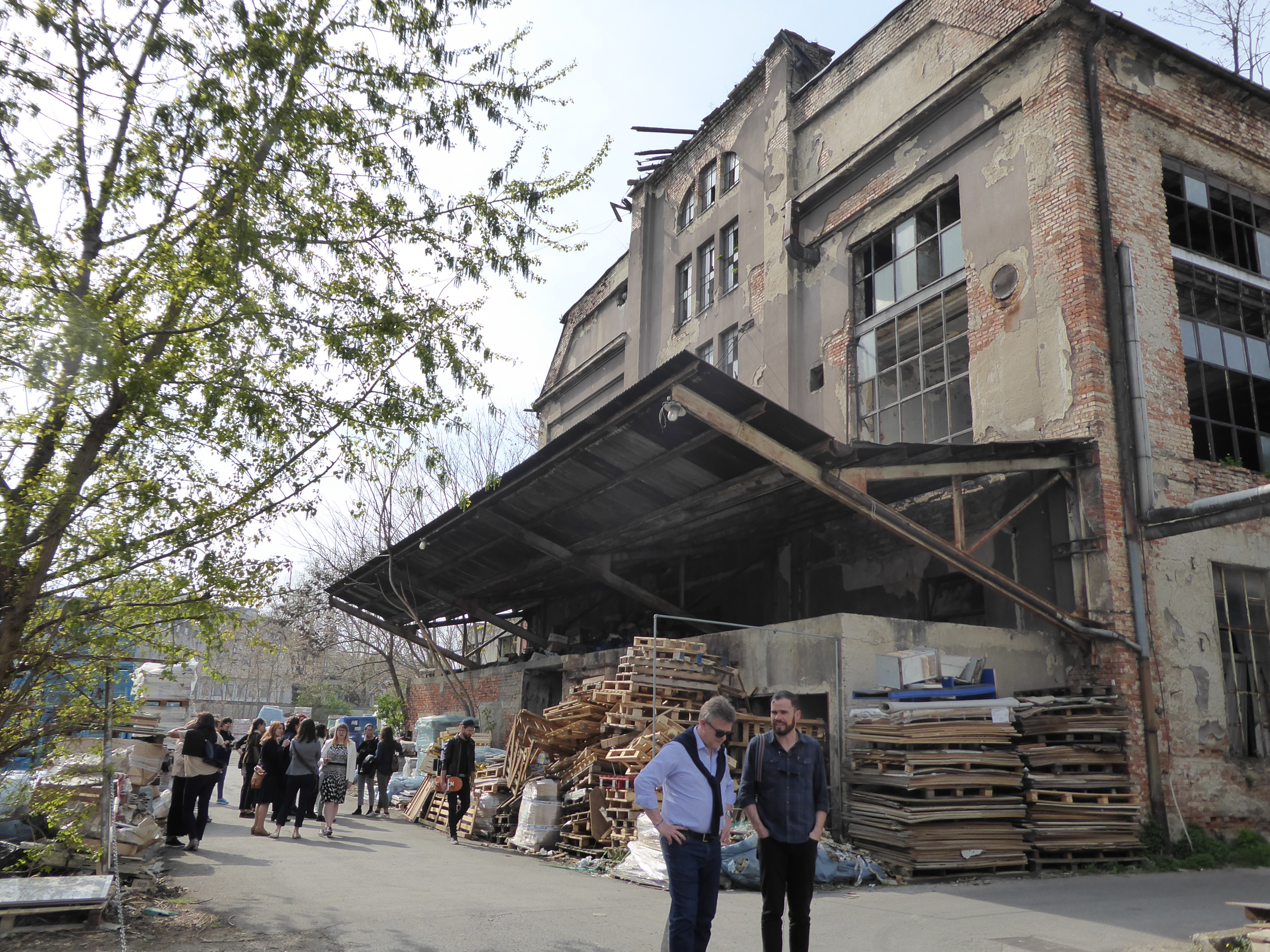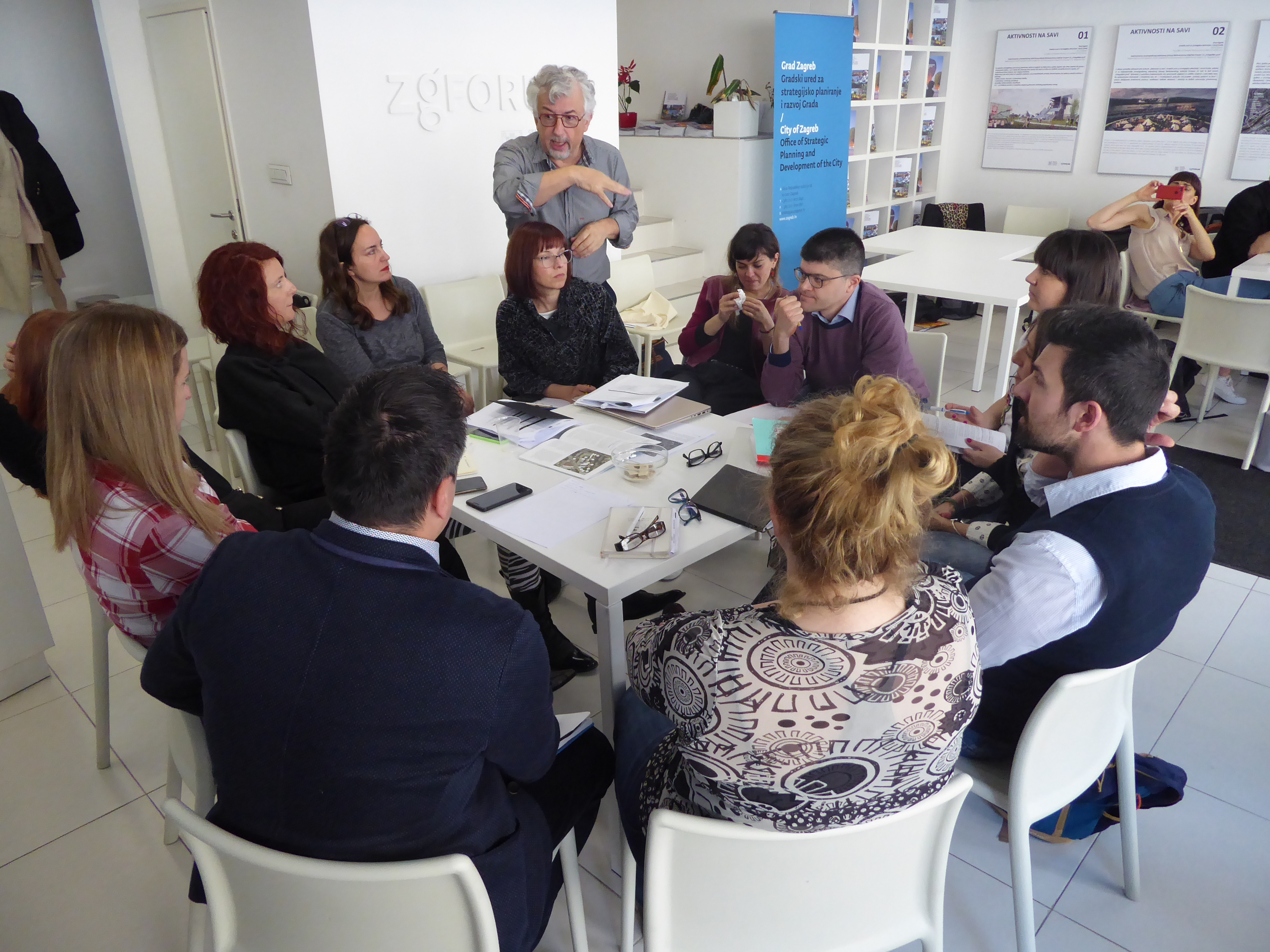TNM in Zagreb - heading for the change.
Edited on
23 September 2019Our second meeting took place on 2-4 April in Zagreb. Before the meeting all partners were asked to prepare transfer plans in advance in order to discuss them together. The main goal of the meeting was to exchange knowledge and experience between cities to create the best possible versions of each transfer plan. An additional aim was to prepare for the next meeting in Toulouse by introducing the issues of public-private partnerships, and engaging residents in community actions and communicating with them.

The Head of the City Office for Strategic Planning and Development of the city, Sanja Jerković, welcomed everyone to Zagreb. The meeting started with a short integration exercise and presentation of the workshop work plan.
CHALLENGES OF THE BROWNFIELD AREA “BLOCK BADEL” IN ZAGREB
Matija Vuger, Nina Čikeš and Tomislav Dumančić from the City Office for Strategic Planning and Development of the city started the meeting with a short introduction about Zagreb and the chosen brownfield. After the field visit the “Urban Regenereation-Mix” group had made a synthesis ofthe context of the brownfield “Block Badel” in relation to Zagreb’s priorities (residents’ participation, co-creation challenges, economc activity, social spaces and activities etc.). An interesting discussion emerged in which all project partners expressed their thoughts and reflections on the area itself and the planned urban regeneration activities. The main challenges of the area were diagnosed and the tools and methods needed were identified. The main emphasis in the discussion was put on the necessity of carrying out analyses and research of the surrounding area in order to be able to plan functions that are desired by the inhabitants.
PEER REVIEW OF THE TRANSFER PLANS
The participants were divided into groups of two cities based on the convergence of the challenges they face in the actions planned in their Transfer Plans. Each city presented its Transfer Plan and then received feedback from the other one. The discussion was lead by the Lead Expert, who summed up the peer learning results of each city. The suggestions mainly concerned aspects related to ensuring the sustainability of the solutions to be developed within the project, ensuring the support of the local decision-makers and the politicians and the scope of interventions.



ON-GOING DIAGNOSIS - MANAGING THE DESIRED & REAL IMPACT – THEORY OF CHANGE
The aim of the workshop on conducting an on-going diagnosis was to reflect on how to measure impact and to whom findings should be reported from a monitoring process. To find answers to these questions participants had to identify a problem they needed to solve in their cities and describe how they plan to do it. Agata Burlińska shared experiences of Lodz in introducing a monitoring system for revitalization projects. Participants then worked on their specific problems trying to find out best methods to capture the effect of the revitalization projects to be implemented in their cities.
MULTI-LEVEL AND INTEGRATED MANAGEMENT
Joanna Brzezińska, Peter Wolkowiński and Marta Ignaczak from Lodz moderated a discussion regarding establishing and functioning of URBACT Local Groups. The main challenge for everybody was to decide who should be invited to cooperate in a ULG so that all stakeholders would be represented - both from within the city offices as well as from the outside, e.g. relevant NGOs, inhabitants, representatives from the private sector.
WORKING TOGETHER IN REGENERATION - STANDARDS OF REGENERATION CULTURE AND INFORMATION WITHIN THE CITY
The aim of the interactive exercise carried out was to discuss the role of communication in the revitalization (urban regeneration) process. During this workshop participants were asked to create “personas” picturing people that can be found in the area where their ULGs operate. Personas are fictional characters, which can be created based upon research in order to represent the different types of public space users that can be encountered during urban regeneration activities.Then the groups tried to answer the following two questions:
✤ What kind of information is important for the created „personas”?
✤ What ways can we use to reach them?
In the end, everyone created lists of how good communication in the urban regeneration process should look like in terms of comprehensibility, accessibility and attractiveness.

INTRODUCTION TO PPP
In preparation for the next meeting in Toulouse we began a discussion about the role of public private partnerships in the urban regeneration process. Domagoj Dodig from the Croatian Ministry of Economy, Entrepreneurship and Crafts presented the principles of operation of public-private partnerships (PPP), including examples of successfully implemented actions in Croatia. His presentation was very inspirational in the context of looking at PPP as a different way of public procurement. The topic that attracted the most attention was using PPP to renovate old buildings for the purpose of social housing. All the participants agreed that this is an interesting way of financing public investments that could support the ongoing urban regeneration initiatives all over Europe and will be addressed during the next transnational meeting.
The last hours of our meeting were dedicated to the meeting of coordinators. During the meeting, current organizational issues were discussed and a communication plan was presented, which was evaluated during a later webinar with partners.
Submitted by n.rydlewska on
